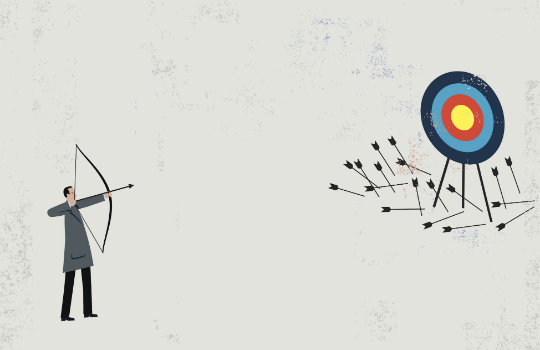Melody Moore explains how gamification can help create positive business outcomes.
Gamification has been gaining popularity in a range of non-business applications for years. Activity trackers are a great example of how taking game mechanics – such as points, competition, levels and recognition – and using them in a different context can motivate people to take action, to change their behaviour and develop their fitness levels.
It is now also gathering momentum in the workplace. In his book ‘How gamification motivates people to do extraordinary things’, Brian Burke, an analyst at Gartner, predicted that 70% of Global 200 organisations would have at least one gamified app by 2014.
Why? Because engaging employees through gamification can help deliver on strategic business goals. It is not uncommon for companies to fail to deliver on promised strategies because they focus too heavily on strategy development and not enough on implementation. Gamification can help support strategy implementation by focusing and rewarding employees to develop new behaviours that are aligned to organisational strategy.
How gamification works
Following feedback/training, managers often have the best intentions to practise a new leadership style or improve the climate for their team, however, old habits can be deeply ingrained, particularly by the time individuals reach senior positions. The key to breaking these habits lies in understanding their formation. They are recurrent, often unconscious patterns of behaviour, driven by frequent repetition and the need to free up our conscious mind to deal with more complex matters.
According to author Charles Duhigg, a habit consists of three key stages that repeat in a ‘loop’. This consists of a trigger that stimulates the behaviour in question, the routine, which provides the habitual response to the trigger, and the reward that the habitual behaviour brings and which drives us to repeat it.
The good news is that habits can be broken, or more effectively, replaced. This takes effort and discipline, as it requires us to bring unconscious behaviours to the forefront of our mind, to be more mindful in the way we engage with others. Behaviour change takes time, and we need to repeat the new behaviours on a regular basis in order to create new, more helpful habits.
This is where a well-designed app based on gamification principles can help. By encouraging and rewarding regular experimentation with new behaviours, an app can make behavioural change easier and more engaging, and can incentivise employees to work towards being more effective leaders. The sense of achievement and reward can also encourage employees to stick with efforts to change their behaviour, meaning that the new behaviours become more ingrained and habitual.
Gamification and human motives
To successfully build and deploy a gamified app, companies must have a solid understanding of their strategic objectives and the personal goals of the employees that will use the app. This can be a difficult task, as a diverse workforce will be motivated differently and therefore respond to gamification in varied ways.
In the 50s, psychologist David McClelland came up with a theory of motivation that explains human behaviour, based on the interplay of three social motives: the desire for achievement, affiliation and power. According to McClelland, the balance and relative importance of these motives differs from one individual to the next. For that reason, well-designed gamified apps should appeal to all three human motives, with something in the game that will engage and motivate each individual. In this way, companies will ensure that they are capable of engaging all employees.
The achievement motive, for example, is aroused though gamification by giving players a clear standard of excellence against which to measure their performance. Gamified apps make players personally responsible for outcomes and provide immediate, concrete feedback from a credible source. Points and awards enable people to monitor their progress and encourage them to stick with the app and try to improve their behaviours.
Alternatively, people who are driven primarily by the affiliation motive have a concern for establishing and maintaining close personal relationships. Aspects of gamification tools, such as social networks, appeal to this through the ability to interact with colleagues who can provide support and encouragement. It can be very powerful in terms of leadership development to have people working together and supporting each other to become better managers.
Finally, people for whom the power motive is important are concerned with having impact and influence. For these employees, social networks, public recognition on leader boards, discussion groups and comment boards built into apps provide an opportunity to have their progress recognised and make an impact on other employees.
Companies should seek to build an app that appeals to all three of these motives. If used effectively, gamification can prove a powerful tool to support strategy implementation across an entire workforce, regardless of how individual employees are best motivated. When smartly designed and deployed, gamified apps make it enjoyable for individuals to change their behaviours and learn new skills in ways that collectively help the organisation to achieve its strategic goals.
Melody Moore is leadership and talent consultant at Hay Group









